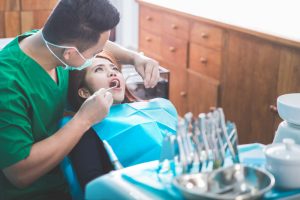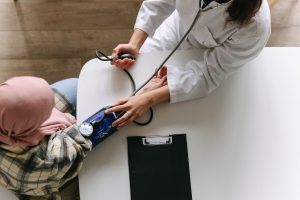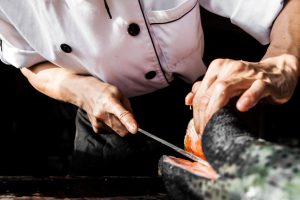Doctor On Call, or DOC for short, is a brand new series brought to you by Medical Channel Asia. This series aims to bring doctors and specialists from various fields to give you an introduction to common health and medical topics that you and the Asian population are interested in. In our 6th DOC, held on 14 Oct (Thursday), from 8pm to 9pm (GMT+8), we have Dr Radhika Lakshmanan, Consultant Breast & General Surgeon at Radhika Breast and General Surgery, to talk to us about Facts and Myths of Breast Cancer.
For Part 1 of the forum, we have Dr Radhika give us a short presentation on the various facts and myths of breast cancer. In Part 2, Dr Radhika answers some of the questions posted by our audience, both collated from the registration process, and also posted LIVE. Read below to find out what more about the various facts and myths of one of the most common cancer: breast cancer!
Presentation by Dr Radhika Lakshmanan
Introduction
Breast cancer is the top most common cancer affecting women in the world. It also doubles up as the most common cause of cancer death in women as well. Another fact of breast cancer is that it is also the most common cancer affecting pregnant and breastfeeding ladies. The reality is that this cancer is very common, and it is very important for everyone to know the facts and take care of themselves.
Myth #1: Breast cancer is only for older people
Fact: Peak age of breast cancer is late 40s to 69 years old, at least in the Asian regions’ data. In Western population it is about 50yo and above.
19% occurs in less than 44 years of age. Ladies out there: do not be complacent, it is not normal to have a lump in your breast, no matter what age you are.
Myth #2: Breast cancer does not happen in pregnancy and breastfeeding
Fact: Unfortunately it is the most common cancer in pregnancy, much as it is not common to develop breast cancer in pregnancy.
For breastfeeding ladies: it is easily missed during breastfeeding. The supportive benefits of breastfeeding only has data for 6 months. For patients who continue to breastfeed for longer periods, it is best to have an assessment of the breast. Also, ladies usually feel like it is not a lump, more of the breast milk being engorged. Breast cancer in breastfeeding is also often presented in the advanced stage, as it is usually missed and disregarded by the patient. Important point: you must get it checked.
Myth #3: If I don’t have a lump, I do not need to worry
Fact: 70% of breast cancer presents with a lump, 30% do not. They may present with:
- Nipple discharge: 8% (abnormal: blood-stained, colourless)
- Pain: 8% (although many go to clinic with pain in the breast, they are usually benign, due to hormonal changes. However, 8% do present with pain.)
- Screen detected: 8% (asymptomatic patients, detected based on mammogram screening)
- Itch: 4% (around the areola)
- Breast deformity: 2% (probably already dealing with advanced cancer)
To note: 80% of lumps are not cancerous. It is common for benign breast lumps. Basically you need a workup to ensure the lumps presented are not cancerous.
For breast cancer, it is usually quite silent without pain. Likewise, if it is a painless lump, it does not mean it is fine. Most importantly, get the lumps evaluated (if lumps are present).
Myth #4: Risk factors for breast cancers – underwired bras, deodorants, implants
Fact: Underwired bras and deodorants – there are no evidence to show that they increase risk of breast cancer.
Implants: a particular type of breast implant (rough surfaces, banned in Singapore) has been shown in the last 5 years to increase the risk of cancers (lymphoma in the breast). This makes up about 4% of all implants.
Other vices in life such as smoking and excessive alcohol and obesity are definite risk factors and contributors to breast cancer.
Myth #5: I do not have a genetic history of breast cancer, hence I do not need to worry
Fact: Only less than 20% of cancers are inherited. 80% are NOT inherited (i.e. sporadic).
Myth #6: Complacency – I should be protected against breast cancer
Fact: The following are indeed good practices:
- Had children at young age and breastfed for kids for 6 months
- Exercise regularly
- Do not smoke and drink alcohol excessively
- No medical history
However, these only reduces the risk, but we still do not know the cause of breast cancer. Reminder again that 80% of breast cancers are not inherited. Most women with breast cancer do not have a risk factor for breast cancer.
Myth #7: Mammogram increases my risk of cancer
Fact: Mammogram catches breast cancer at its infancy, before it increases in size and spreads. Treatment will then be simpler and more successful as well. It does not cause any risk of cancer. Radiation is everywhere, and hence it should not be a factor for you to not go for a mammogram.
But also note that 8 to 10% of cancers are missed in mammogram. Hence, we complement it with ultrasound and a breast surgeon’s examination. We do not want to disregard it.
Diagnosis of breast cancer
Imaging helps to see abnormal growth, but they do not prove that they are cancerous. The only way to diagnose is to do a biopsy and obtain a breast tissue sample, which can be done in about 20 minutes. There are NO risk of breast cancer spread by doing biopsy (as compared to a potential cancer in the abdomen area).
Treatment is also based on the biopsy results.
Treatment of breast cancer
Treatable breast cancer refers to stage 3 and below. If stage 4, we are looking at advanced stage and the breast cancer is unlikely to be treated as the tumour has spread to other parts of the body.
Type of surgery and chemotherapy is independent of each other. Mainstay of treatment for breast cancer is surgery. Whether we need chemotherapy for the breast cancer depends on other factors such as the stage and the biological type of cancer.
Treatment is multi-modal, to ensure a higher rate of success. Comprehensive management with multiple specialties such as breast surgeons, medical oncologist, radiological oncologists etc. Of course also not all patients will go through everything, it all depends on the type of breast cancer and the individual.
- Sub-types of breast cancer
- Difference in behaviour – biology of tumour. When we look at the breast cancer cells of 2 individuals under the microscope, they may be different
- Difference in treatment response
- Difference in relapse
Breast surgery myths
Breast surgeries does NOT mean the following:
- Losing the breast
- Pain
- Dependent
- Less of a woman
The surgery is going to be very minimal and not painful anymore. You also do not have to be worried about losing the breast. Our aim is not to disfigure you more – we help with breast reconstructive as well, in the field called oncoplastic breast surgery. This is a marriage between oncology surgery and plastic surgery.
Survival rates for breast cancer
5 year survival rate has improved from 63% in the 1960s to 90% currently. Stage 0 breast cancer can even go up to 99%. However, in stage 4 it drops to 25%.
Chemotherapy woes
Cooling caps can help with hair loss. The hair will also regrow back after chemotherapy stops.
Importance of the right specialist
When presenting with a lump, ladies should see the right specialists. In Singapore, gynaecologists only look after women’s health such as pregnancy, breastfeeding and menstrual health.
Oncologists only see patients with cancer. However, we need to note that only 20% of lumps are cancerous. They are not the right person to evaluate a breast lump. Only the breast surgeons are able to evaluate properly the breast lump.
Final words
The risk of cancer increases with age (as with all other cancers). With an ageing population, the number of people diagnosed and living with cancer is likely to increase further. However with better treatment regimen, more people will survive. Hence, we should not be fearing but continue to learn how to live with it.
What’s next in store?
- See Part 2 for the Question and Answer (Q&A) segment with Dr Radhika!
- If you have missed our previous DOC webinars, visit our Medical Channel Asia’s YouTube page, or you can also read the articles:
- Doctor On Call (DOC): Dr Sean Leo – Common Sports Injuries Part 1, Part 2
- Doctor On Call (DOC): Dr Lee Fang Jann – Men’s Health Part 1, Part 2
- Doctor On Call (DOC): Dr Felix Li – Medical Aesthetics Part 1, Part 2
- Doctor On Call (DOC): Dr Michael MacDonald – The Silent Killer Part 1, Part 2
- Doctor On Call (DOC): Dr Jade Kua – DARE to Save a Heart Part 1, Part 2











